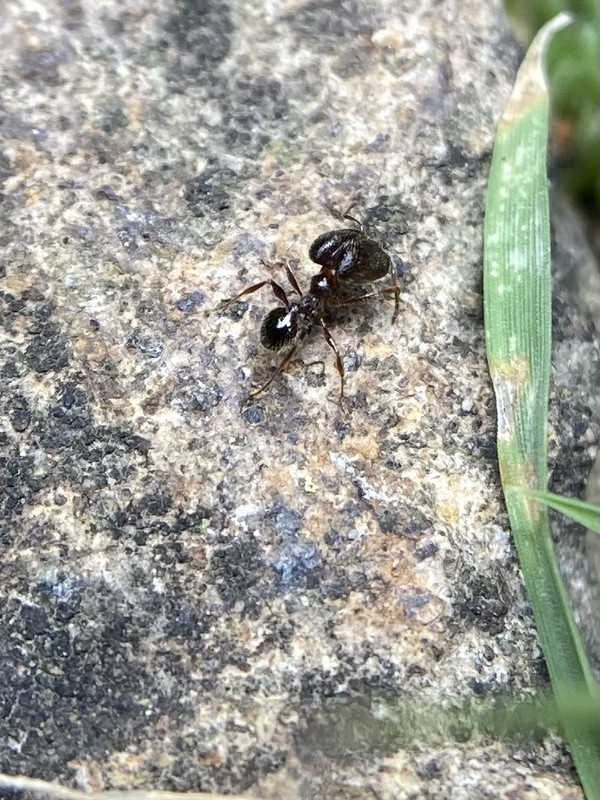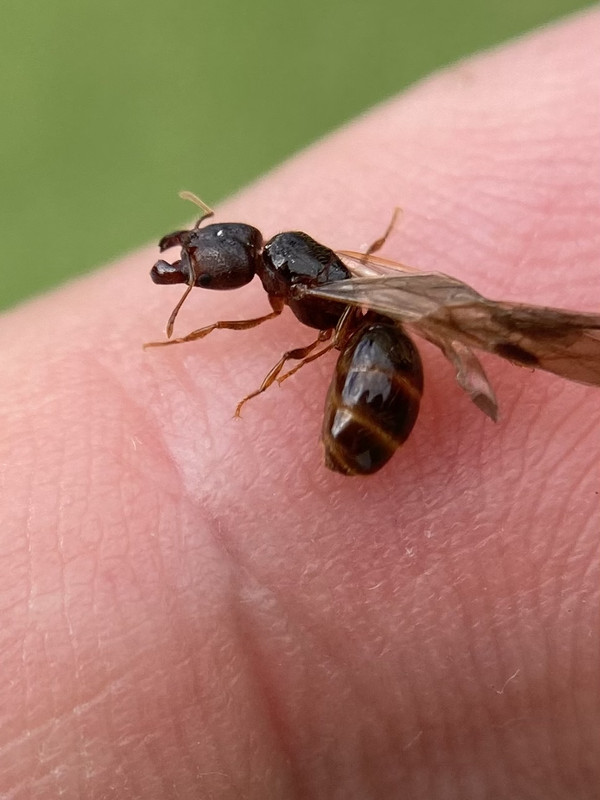Here is my first observation, some sort of Pheidole with a ridiculously huge head. This one was in a cloud forest.



Another massive Pheidole major. This one was 7mm at least.
Solenopsis geminata. It's not quite visible here but Solenopsis have a 2-segmented antennal club while Pheidole have a 3 (or rarely 4) segmented club. The most easily visible difference here should be the petiole shape, Solenopsis and most other solenopsidines have a pretty characteristic petiole. The node of the petiole is taller but somewhat skinny, just about equal in height with the postpetiole. The best I can describe it, the petioles appear to run parallel with themselves.
Some sort of small, stubby looking Camponotus. Formicines are not that abundant down here.
The only similar looking species AntWeb lists for Guatemala are species like C. zoc or C. abscisus, though there are some more similar species in nearby regions. I can't really narrow it down to a subgenus since I can't tell how wide the propodeum is; it should be either Myrmobrachys or Myrmaphaenus.
Edited by Manitobant, July 1 2023 - 9:34 AM.
Thanks! You guys are truly amazing. C. zoc looks more like it to me due to head shape. I can try to get more photos of the propodeum.Solenopsis geminata. It's not quite visible here but Solenopsis have a 2-segmented antennal club while Pheidole have a 3 (or rarely 4) segmented club. The most easily visible difference here should be the petiole shape, Solenopsis and most other solenopsidines have a pretty characteristic petiole. The node of the petiole is taller but somewhat skinny, just about equal in height with the postpetiole. The best I can describe it, the petioles appear to run parallel with themselves.
Another massive Pheidole major. This one was 7mm at least.The only similar looking species AntWeb lists for Guatemala are species like C. zoc or C. abscisus, though there are some more similar species in nearby regions. I can't really narrow it down to a subgenus since I can't tell how wide the propodeum is; it should be either Myrmobrachys or Myrmaphaenus.Some sort of small, stubby looking Camponotus. Formicines are not that abundant down here.

Nice find! Definitely some Pheidole species.
One of the five bajillion Pheidole species??What type of queen is she
0 members, 0 guests, 0 anonymous users